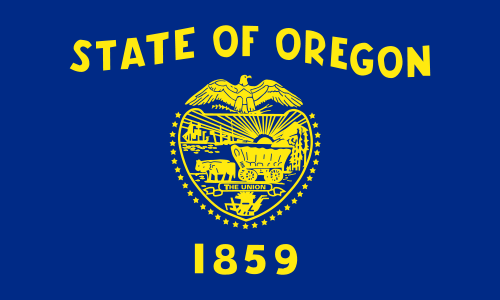Oregon Measure 95, Student Learning as Determinate of Teacher Pay Initiative (2000)
| Oregon Measure 95 | |
|---|---|
| Election date |
|
| Topic Public school teachers and staff |
|
| Status |
|
| Type Initiated constitutional amendment |
Origin |
Oregon Measure 95 was on the ballot as an initiated constitutional amendment in Oregon on November 7, 2000. It was defeated.
A "yes" vote supported prohibiting schools from basing teacher pay on length of time teaching or on additional college courses taken and instead requiring basing teach pay, including pay increases, on job performance. |
A "no" vote opposed prohibiting schools from basing teacher pay on length of time teaching or on additional college courses taken and instead requiring basing teach pay, including pay increases, on job performance. |
Election results
|
Oregon Measure 95 |
||||
|---|---|---|---|---|
| Result | Votes | Percentage | ||
| Yes | 514,926 | 34.86% | ||
| 962,250 | 65.14% | |||
Text of measure
Ballot title
The ballot title for Measure 95 was as follows:
| “ | AMENDS CONSTITUTION: STUDENT LEARNING DETERMINES TEACHER PAY; QUALIFICATIONS, NOT SENIORITY, DETERMINE RETENTION RESULT OF '“YES” VOTE: “Yes’’ vote requires student learning, not seniority, determines teacher pay; qualifications, student learning determine retention. RESULT OF “ NO” VOTE: “No” vote retains current laws for paying, retaining teachers by qualifications, including performance, education, seniority. SUMMARY: Amends Constitution. Currently, seniority and postgraduate study may determine public school teacher pay, job security. Measure requires public school teacher’s pay, job security to be based on increase in students’ appropriate knowledge while under teacher’s instruction. Allows performance-based pay increases, certain across-the-board cost-of-living increases, retention of most qualified teacher of subject when layoffs occur. Prohibits automatic pay increases, job retention based on seniority. Applies to new or extended collective bargaining agreements signed on/after November 7, 2000. ESTIMATE OF FINANCIAL IMPACT: State expenditures on higher education are estimated to increase $11,600,000 during the first three years and $5,350,000 per year after that. Local school districts and community college districts expenditures are estimated to increase $35,420,000 during the first three years and $16,460,000 per year after that. These expenditures will pay for additional testing of students, in order to measure teacher performance. There is no impact on state or local government or revenues. | ” |
Full Text
The full text of this measure is available here.
Path to the ballot
An initiated constitutional amendment is a citizen-initiated ballot measure that amends a state's constitution. Eighteen (18) states allow citizens to initiate constitutional amendments.
In Oregon, the number of signatures required for an initiated constitutional amendment is equal to 8% of the votes cast in the last gubernatorial election. A simple majority vote is required for voter approval unless the initiative proposes changing vote requirements, then the initiative must be approved by the same supermajority requirement as proposed by the measure.
See also
External links
Footnotes
State of Oregon Salem (capital) | |
|---|---|
| Elections |
What's on my ballot? | Elections in 2025 | How to vote | How to run for office | Ballot measures |
| Government |
Who represents me? | U.S. President | U.S. Congress | Federal courts | State executives | State legislature | State and local courts | Counties | Cities | School districts | Public policy |


